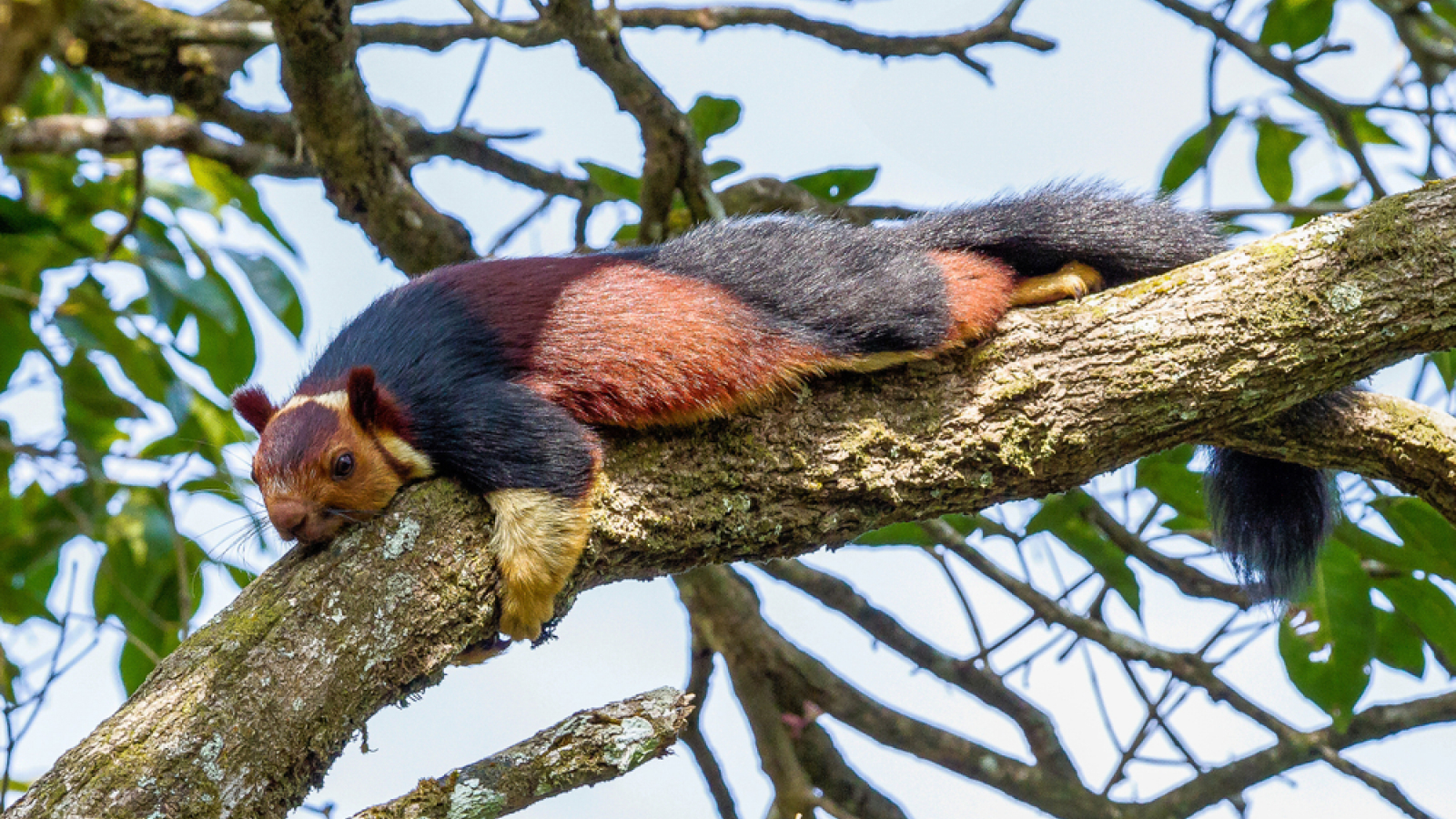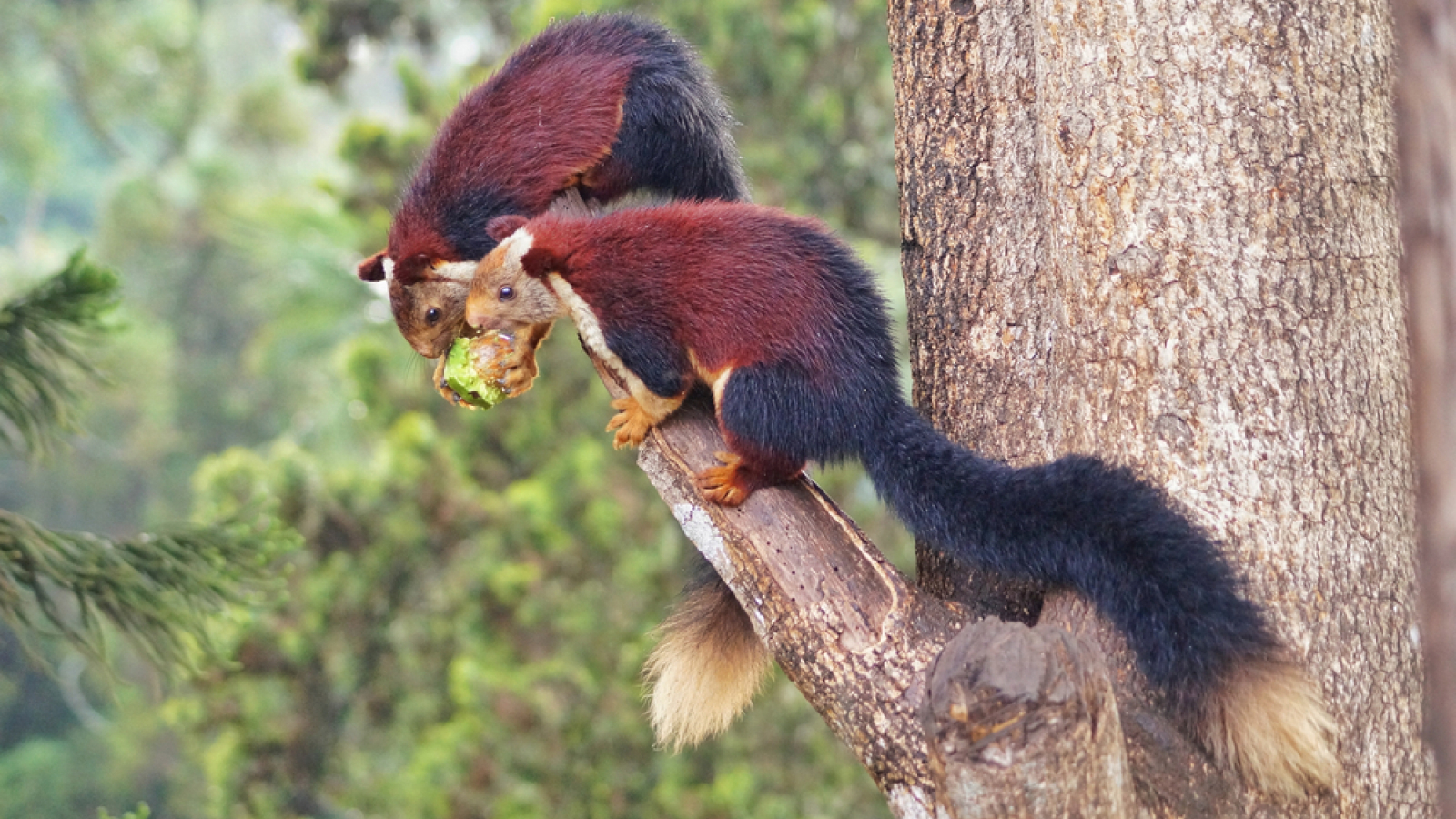Indian giant squirrel: The 'rainbow' rodent that is also the world's largest squirrel
Indian giant squirrels, with their extraordinarily colorful fur, are found in forests and woodlands of India.

Name: Indian giant squirrel or Malabar giant squirrel (Ratufa indica), nicknamed the rainbow squirrel
Where it lives: Forests and woodlands in pockets across central and southern India
What it eats: Fruits, leaves, bark, seeds, occasionally bird eggs and insects
Why it's awesome: Although the stomach and arms of Indian giant squirrels are a creamy-beige color, the rest of their pelage is a little more fancy — with hues of orange, purple and red — which is why they are nicknamed "rainbow squirrels."
These colorful critters can grow to be up to 3 feet (1 meter) long — about twice the length of their American cousin, the eastern gray squirrel (Sciurus carolinensis). They're so big they've been crowned the largest squirrel species in the world by the Guinness World Records.
Related: How do squirrels remember where they buried their nuts?
Indian giant squirrels live exclusively in forests, where they build multiple round nests, known as dreys, high up in the trees. They use forks in the branches to support the nests and interweave them with the stems of climbing plants, before making them cozy by padding the nests with leaves. Unlike many other squirrels, Indian giant squirrels store food in the treetops.
Sign up for the Live Science daily newsletter now
Get the world’s most fascinating discoveries delivered straight to your inbox.

The species is generally solitary, joining up to form pairs during its two breeding seasons — between February and March and again in August to September — synchronizing with the pre- and post-monsoon seasons.
But why are Indian giant squirrels so colorful? Scientists aren't sure, but the colorful coats may help them camouflage themselves in their forest homes. One study published in 2021 reported an Indian ground squirrel sitting completely still in leafy branches for half an hour while a serpent eagle hovered above. "They remain calm and quiet," the authors wrote, adding that they spread their legs and gripped the branches to help avoid detection.

Megan Shersby is a naturalist, wildlife writer and content creator. After graduating from Aberystwyth University with a BSc (Hons) degree in Animal Science, she has worked in nature communications and the conservation sector for a variety of organisations and charities, including BBC Wildlife magazine, the National Trust, two of the Wildlife Trusts and the Field Studies Council. She has bylines in the Seasons anthologies published by the Wildlife Trusts, Into The Red published by the BTO, and has written for the BBC Countryfile magazine and website, and produced podcast episodes for its award-winning podcast, The Plodcast.









